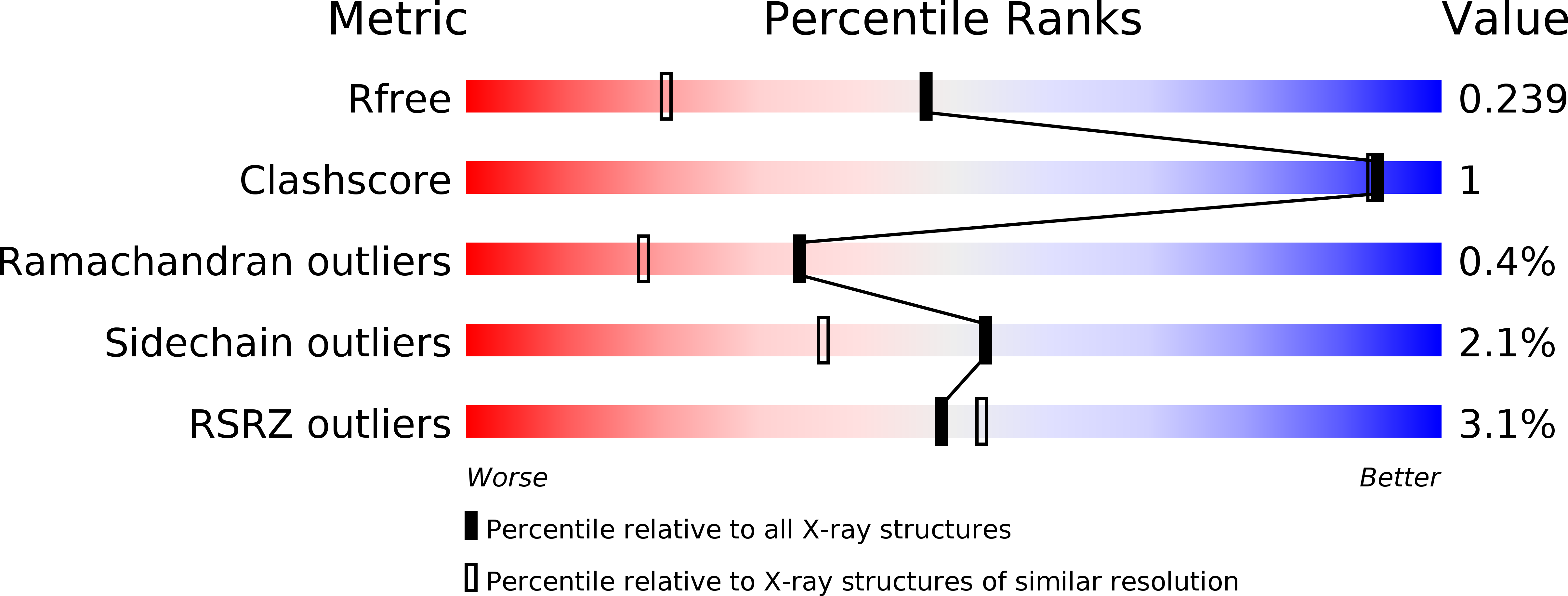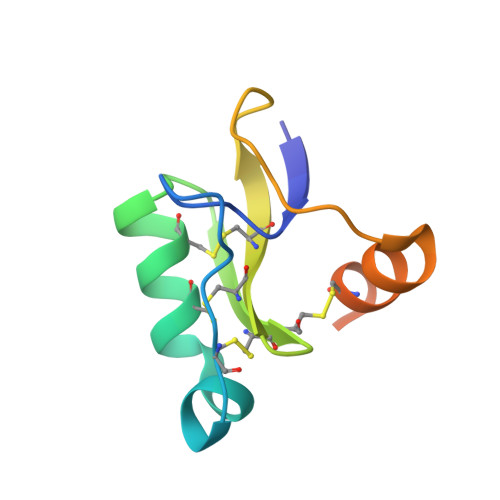Chaperone-mediated native folding of a beta-scorpion toxin in the periplasm of Escherichia coli.
O'Reilly, A.O., Cole, A.R., Lopes, J.L., Lampert, A., Wallace, B.A.(2014) Biochim Biophys Acta 1840: 10-15
- PubMed: 23999087
- DOI: https://doi.org/10.1016/j.bbagen.2013.08.021
- Primary Citation of Related Structures:
4KYP - PubMed Abstract:
Animal neurotoxin peptides are valuable probes for investigating ion channel structure/function relationships and represent lead compounds for novel therapeutics and insecticides. However, misfolding and aggregation are common outcomes when toxins containing multiple disulfides are expressed in bacteria. The β-scorpion peptide toxin Bj-xtrIT from Hottentotta judaica and four chaperone enzymes (DsbA, DsbC, SurA and FkpA) were co-secreted into the oxidizing environment of the Escherichia coli periplasm. Expressed Bj-xtrIT was purified and analyzed by HPLC and FPLC chromatography. Its thermostability was assessed using synchrotron radiation circular dichroism spectroscopy and its crystal structure was determined. Western blot analysis showed that robust expression was only achieved when cells co-expressed the chaperones. The purified samples were homogenous and monodisperse and the protein was thermostable. The crystal structure of the recombinant toxin confirmed that it adopts the native disulfide connectivity and fold. The chaperones enabled correct folding of the four-disulfide-bridged Bj-xtrIT toxin. There was no apparent sub-population of misfolded Bj-xtrIT, which attests to the effectiveness of this expression method. We report the first example of a disulfide-linked scorpion toxin natively folded during bacterial expression. This method eliminates downstream processing steps such as oxidative refolding or cleavage of a fusion-carrier and therefore enables efficient production of insecticidal Bj-xtrIT. Periplasmic chaperone activity may produce native folding of other extensively disulfide-reticulated proteins including animal neurotoxins. This work is therefore relevant to venomics and studies of a wide range of channels and receptors.
Organizational Affiliation:
Department of Physiology and Pathophysiology, Friedrich-Alexander Universität Erlangen-Nürnberg, Universitätsstraße 17, 91054 Erlangen, Germany.
















